The Speaker of the House is deeply entrenched in historical and traditional practices and established the existence and importance it plays in government today. The role of the Speaker of the House in the United States has its roots in the British parliamentary system. Let’s take a more detailed look into the historical and traditional reasons behind having a Speaker in the House of Representatives.
Key Take Aways:
- The Speaker’s role originated from the British system and has become a key leadership position in the U.S. Congress, showing significant political influence.
- Historical figures have shaped the power and role of the Speaker, highlighting its importance in legislative and political arenas.
- Changes in the 1970s, influenced by new House rules and the Watergate scandal, adjusted the Speaker’s power, ensuring a balance between strong leadership and collective legislative decision-making.
Table of Contents
- What is The Speaker of The House?
- Roots in the British Parliamentary System:
- Adaptation to the American Context:
- The Origin of the Speaker of the House.
- Historical Speakers of The Hosue and Their Impact:
- The power dynamics of the Speaker of the House shifted again in the mid-1970s.
- Who's Next in Line Presidential Succession
- Evolving Traditions and Practices of the Speaker of the House:
- Conclusion:
- Speaker of the House: A Historical Look
- Frequently Asked Questions
What is The Speaker of The House?
The Speaker of the House is the leader of the United States House of Representatives, chosen by its members. They play a crucial role in guiding the legislative agenda, while presiding over House sessions. They represent the House in all administrative and procedural matters. This position is pivotal in American politics, acting as a key figure in legislative decisions and second in line to the presidency.
In the storied halls of American politics, the Speaker of the House stands as a central figure. The Speaker did not always have the significant power and influence it does today. Ever shaped by the nation’s changing political landscape the Speaker’s role has evolved considerably, since the early days of the republic.
This article offers a simple look into the history of the Speaker of the House. Here, we examine how this critical position has developed over time and the impact it has had on legislative processes and American governance. From its constitutional origins to the dynamic personalities who have held the gavel. Finally, we delve into the nuances and transformations of one of the most influential roles in U.S. politics.
Roots in the British Parliamentary System:
The role of the Speaker of the House in the United States has its roots in the British parliamentary system. In the UK, the Speaker is a Member of Parliament responsible for presiding over the House of Commons. Maintaining order during debates, and representing the Commons to the monarch, among other duties.
The U.S. adopted and adapted this role for its legislative structure. Reflecting the influence of British parliamentary practices on American government institutions. Additionally, the United States Speaker, while similar in function to the UK Speaker in presiding over the legislative body and maintaining order. They also hold significant political power and is often a key leader in their political party..
Adaptation to the American Context:
When the framers of the United States Constitution designed the legislative branch, they adopted the concept of a Speaker to preside over the House. They adapted the role to fit the needs of a republican form of government, independent of monarchic influence. In contrast, to the more neutral role of the Speaker in the British House of Commons. The United States Speaker is a more politically active figure than that of the House of Commons.
The Origin of the Speaker of the House.
in 1789, under Article I, Section II of the U.S. Constitution established the Speaker of the House. Becoming the political and parliamentary leader of the House, presiding officer, and administrative head. The House majority party votes to elect a new Speaker each new Congress or when a vacancy occurs. The Constitution does not explicitly state a speaker must be a member of the House. The Speaker is second in the presidential line of succession after the Vice President.
Historical Speakers of The Hosue and Their Impact:
Frederick Muhlenberg The first Speaker of the House.
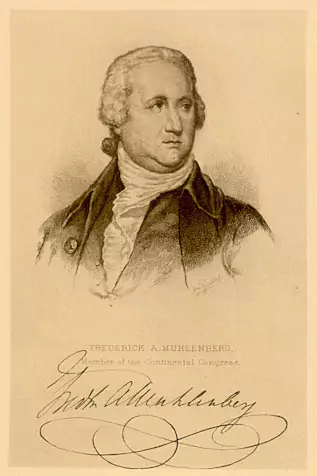
Frederick Augustus Conrad Muhlenberg (1750–1801), second son of Henry Melchior, a Lutheran minister, served as a member of the Continental Congress and first speaker of the national House of Representatives.
Like those of his early successors largely shaped the Speakership by evolving rules and customs. Then during the 19th century, the Speaker’s role expanded significantly under
Henry Clay of Kentucky (1777-1852).
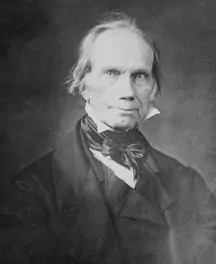
A pivotal Senate leader during the antebellum era, a period in Senate history marked by heated debates over slavery and territorial expansion, Clay first entered politics in Kentucky’s state house of representatives in 1803.
Clay was influential in legislative agenda-setting. This trend continued towards the end of the century, with Speakers gaining considerable influence over the legislative process.
In the 20th century, figures like
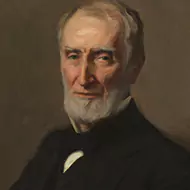
Cannon served as chairman of three committees: Expenditures in the Post Office Department, Rules, and Appropriations. From the 58th Congress through the 61st Congress (1903–1911).
and Sam Rayburn
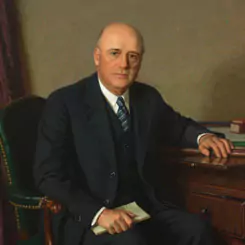
Served as speaker of the U.S. House of Representatives for nearly 17 years. Elected 1912 and served there continuously for 48 years 8 months, which at the time of his death was a record tenure. He was elected to Congress 25 consecutive times.
These men further increased the power of the Speaker, shaping legislation and party policy. Although some powers were curtailed and then partly restored in later years. Rayburn was notably the longest-serving Speaker. Influencing key legislation in cooperation with Presidents Franklin D. Roosevelt and Harry Truman.
The power dynamics of the Speaker of the House shifted again in the mid-1970s.
Reform Movement:
In the early 1970s, there was a strong reform movement within Congress, driven primarily by younger, more progressive members. They sought to balance the House, reduce the concentration of power, and make the legislative process more transparent.
Changes in House Rules and Procedures:
This period saw a series of changes in House rules and procedures. These changes were aimed at reducing the absolute power of the Speaker and committee chairs and increasing the participation of rank-and-file members in the legislative process. The reforms included measures to weaken the seniority system, increase the number of subcommittees, and make committee appointments more democratic.
Watergate Scandal:
The Watergate scandal, culminating in President Nixon’s resignation in 1974, had a profound impact on American politics. It led to a surge in public demand for greater accountability and transparency in government. This sentiment was reflected in the House, where members pushed for reforms to curb the powers of leadership and committees.
Rise of Caucus and Committee Power:
As a result of these reforms, the power previously concentrated in the hands of the Speaker and a few senior members was somewhat diffused. Power shifted towards the party caucuses and individual committees, giving more members a voice in decision-making processes.
Technological and Media Changes:
The 1970s also saw changes in technology and media, which affected the functioning of the House. The advent of televised sessions, for instance, changed the dynamics of how members interacted with the public and each other, affecting the power and visibility of the Speaker’s role.
These changes in the 1970s set the stage for how the Speaker’s role would evolve in subsequent decades, balancing between centralized leadership and the democratization of legislative processes.
The Speaker of the House’s influence grew again under Carl Albert a politician who served as a representative from Oklahoma (1947–77) in the U.S. House of Representatives and as speaker of the House (1971–77).
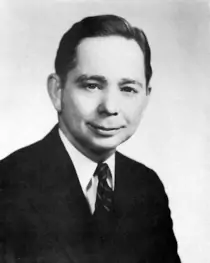
Carl Albert was known for his effective leadership style. He was skilled at consensus-building and worked to maintain a balance between asserting the Speaker's traditional authority and respecting the increased autonomy of individual members and committees.
and later Tip O’Neill. Who was known for his opposition to President Ronald Reagan’s policies.
Who’s Next in Line Presidential Succession
In 1792, the United States Congress passed the Presidential Succession Act. This Act established a line of succession following the death, resignation, or incapacitation of the President and Vice President. The Act placed the President pro tempore of the Senate and the Speaker of the House next in line after the Vice President. This was the first statutory establishment of a line of succession beyond the Vice President.
Presidential line of succession as outlined in the United States Constitution and clarified by subsequent legislation. The Constitution’s Article II, Section 1, Clause 6, mentions the transfer of the President’s powers and duties to the Vice President in case of the President’s inability to serve. Moreover, The Presidential Succession Act of 1947, codified in 3 U.S.C. § 19, further specifies the order, placing the Speaker of the House second in line after the Vice President.
In 1967, the 25th Amendment to the U.S. Constitution was ratified. This clarified the procedures for presidential succession and the filling of a vacancy in the office of the vice president. It states that the vice president becomes president if:
- If the president dies.
- Resigns.
- Removed from office.
The 25th Amendment allows the president to nominate a vice president if the position becomes vacant.
25th Amendment Fun Fact
The inaugural invocation of the 25th Amendment was in 1973. President Nixon appointed Gerald R. Ford to replace Vice President Spiro Agnew. The 25th Amendment applied for the second time within the subsequent year, after Nixon’s resignation. Then-Vice President Gerald Ford took the presidency, subsequently selecting Nelson Rockefeller to succeed him as Vice President.
Evolving Traditions and Practices of the Speaker of the House:
Over time, the role of the Speaker evolved with changing political, social, and economic conditions. As a growing nation, the United States created new traditions and practices that established and shaped the modern role of the Speaker. The Speaker’s functions expanded beyond mere presiding duties to include more substantial legislative and political responsibilities.
Continuity and Stability:
Having a Speaker helps maintain continuity and stability in the legislative process. The established protocols and traditions upheld by the Speaker help guide the functioning of the House through different historical periods and political climates.
Reflecting the People’s Will:
The Speaker, being elected by members of the House, symbolizes a form of representation that’s in line with democratic traditions, ensuring that the legislative leadership reflects the people’s will as expressed through their elected representatives.
Enhancing the Dignity and Authority of the House:
The Speaker, through their roles in representing the House officially and ceremonially, enhances the dignity and authority of the House as a legislative body.
Customary Respect and Authority:
Over centuries, the office of the Speaker has garnered respect and authority, which helps in executing the legislative agenda with a sense of customary legitimacy and recognition.
Impeachment Process
Any member of the House of Representatives can propose an impeachment resolution or an inquiry can be initiated. The Speaker of the House plays a crucial role in the impeachment process. As the leader of the majority party and the presiding officer of the House, the Speaker can influence whether impeachment proceedings are initiated.
They have the power to refer impeachment resolutions to committees for investigation and can guide the legislative agenda, including the scheduling of debates and votes on impeachment. Additionally, the Speaker often represents the views and strategies of their party, impacting the political dynamics surrounding impeachment discussions and decisions
Conclusion:
Grasping the historical and customary foundations of the Speaker’s role is crucial to understanding its contemporary responsibilities and power. Such context explains how the Speaker’s role and obligations have progressed and the esteem in which the position is held within the U.S. legislative system.
Speaker of the House: A Historical Look
Frequently Asked Questions
What is the role of the Speaker of the House?
The Speaker of the House is the presiding officer of the United States House of Representatives, responsible for leading House meetings, managing legislative business, and representing the House
How is the Speaker of the House chosen?
The Speaker is elected by the members of the House of Representatives at the beginning of each new Congress.
Who was the first Speaker of the House?
The first Speaker of the House was Frederick Muhlenberg, elected in 1789.
What are some key responsibilities of the Speaker?
Key responsibilities include setting the legislative agenda, presiding over debates, and representing the House in discussions with the President and Senate.
How has the role of the Speaker evolved?
The role has evolved from a largely procedural position to one of significant political influence and leadership within the House and the broader legislative process.

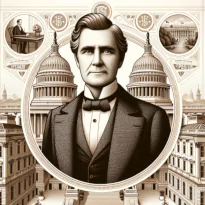
Some genuinely nice stuff on this internet site, I love it.